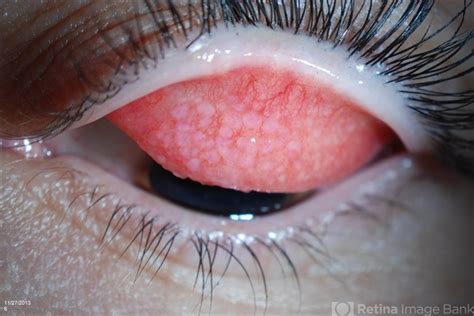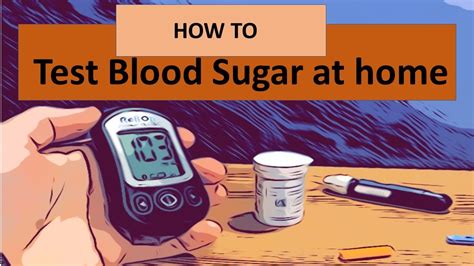Giant Papillary Conjunctivitis (GPC) is a condition that affects the eyes, specifically the conjunctiva, which is the thin membrane covering the white part of the eyes and the inside of the eyelids. It is characterized by the development of large papillae, which are small bumps or nodules, on the conjunctiva. These papillae can cause discomfort, itchiness, and blurred vision, significantly impacting the quality of life for individuals suffering from this condition.
To understand GPC, it’s essential to delve into its causes and risk factors. One of the primary causes of GPC is the prolonged use of contact lenses, particularly soft contact lenses. The constant irritation from the lens can lead to an allergic reaction, resulting in the formation of giant papillae. Other potential causes include exposure to allergens, irritants, or foreign bodies that can trigger an immune response and lead to inflammation of the conjunctiva.
Symptoms and Diagnosis
The symptoms of GPC can vary in severity but often include eye discomfort, itchiness, excessive tearing, redness, and blurred vision. In some cases, individuals may also experience a sensation of having a foreign body in the eye or notice a decrease in tolerance to contact lens wear. Diagnosis is typically made through a comprehensive eye examination, including a detailed medical history, particularly focusing on contact lens use and any history of allergies or sensitivities.
During the examination, an eye care professional may use a slit-lamp biomicroscope to closely examine the conjunctiva for the presence of giant papillae. This diagnostic tool provides a detailed view of the eye’s structures, allowing for an accurate assessment of the condition. In some instances, further testing may be required to rule out other conditions that could be causing the symptoms.
Treatment and Management
The treatment of GPC focuses on reducing inflammation, managing symptoms, and preventing future occurrences. For individuals who wear contact lenses, this often involves discontinuing contact lens use for a period, allowing the conjunctiva to heal. In addition to this, topical medications such as antihistamines or mast cell stabilizers may be prescribed to reduce inflammation and alleviate symptoms.
In cases where the condition is severe or does not respond to initial treatments, more intensive therapies may be necessary. This could include the use of corticosteroid eye drops, although their use must be carefully monitored due to potential side effects. Furthermore, strategies to minimize contact lens-related irritation, such as improving lens cleanliness, using daily disposable lenses, or switching to a different type of contact lens material, can be beneficial.
Prevention
Preventing GPC involves measures to reduce exposure to potential irritants and minimize the risk of allergic reactions. For contact lens wearers, proper lens care and hygiene are crucial. This includes regular cleaning and disinfection of the lenses, replacing the lens case frequently, and avoiding sharing of lens care products. Additionally, considering alternatives to contact lenses, such as refractive surgery, may be an option for some individuals, especially those with a history of GPC or other eye conditions.
Advanced Therapies and Research
Research into GPC and its management is ongoing, with a focus on developing more effective treatments that can reduce symptoms and improve quality of life for sufferers. Advances in pharmaceuticals, such as more targeted anti-inflammatory medications, and in the technology of contact lenses, such as materials that reduce irritation, hold promise for better management of the condition.
Moreover, there is a growing interest in understanding the immunological aspects of GPC, with studies exploring how the body’s immune response contributes to the development and severity of the condition. By gaining a deeper understanding of these mechanisms, it may be possible to develop therapies that can prevent GPC from occurring in the first place, or at least reduce its impact on those affected.
Living with GPC
For individuals living with GPC, managing the condition effectively is key to minimizing its impact on daily life. This involves working closely with an eye care professional to develop a personalized treatment plan, adhering to recommended treatments, and making lifestyle adjustments as necessary.
It’s also important for those with GPC to stay informed about the latest developments in treatment and management, attending regular follow-up appointments, and being proactive in managing their condition. By taking these steps, individuals can better control their symptoms, reduce the risk of complications, and maintain their eye health and vision.
What are the primary causes of Giant Papillary Conjunctivitis?
+The primary causes of Giant Papillary Conjunctivitis (GPC) include the prolonged use of contact lenses, particularly soft contact lenses, exposure to allergens, and irritants or foreign bodies that can trigger an immune response and lead to inflammation of the conjunctiva.
How is Giant Papillary Conjunctivitis diagnosed?
+Diagnosis of GPC is typically made through a comprehensive eye examination, including a detailed medical history, particularly focusing on contact lens use and any history of allergies or sensitivities, and the use of a slit-lamp biomicroscope to examine the conjunctiva for giant papillae.
What are the treatment options for Giant Papillary Conjunctivitis?
+Treatment options for GPC include discontinuing contact lens use, topical medications such as antihistamines or mast cell stabilizers to reduce inflammation and alleviate symptoms, and in some cases, corticosteroid eye drops. Preventive measures such as proper lens care and hygiene are also crucial.
Can Giant Papillary Conjunctivitis be prevented?
+Prevention of GPC involves measures to reduce exposure to potential irritants and minimize the risk of allergic reactions. For contact lens wearers, proper lens care and hygiene are essential, including regular cleaning and disinfection of the lenses, replacing the lens case frequently, and avoiding sharing of lens care products.
What does the future hold for the treatment and management of Giant Papillary Conjunctivitis?
+Research into GPC is ongoing, with a focus on developing more effective treatments, such as advanced pharmaceuticals and contact lens technologies that reduce irritation. Understanding the immunological aspects of GPC may also lead to preventive therapies.



